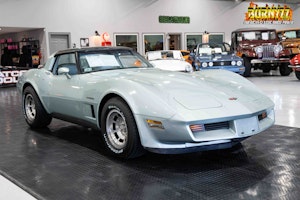Media | Articles
The Koenigsegg Jesko is a faster, friendlier Agera RS
As the Agera RS finishes its limited production, there’s now room at the top of the heap of Koenigsegg’s so-called “megacar” hierarchy. The new Jesko, named after company founder Christian von Koenigsegg’s father, seems perfectly suited for that role with a host of improvements for the Koenigsegg line, from the suspension to the engine and beyond.
Starting with the car’s backbone, Koenigsegg claims the body structure is the most rigid in the world. Reinforced with Dyneema, the world’s strongest fibers, a first for a production vehicle, the carbon fiber monocoque and aluminum sandwich construction that provides the chassis for the car has been crash-tested for European and American road use.
Any megacar needs four-digit horsepower and Koenigsegg has redesigned its twin-turbocharged, 5.0-liter DOHC V-8 to produce 1280 horsepower on gasoline and 1600 hp on boost-loving E85. The heart of the V-8 is a billet steel crankshaft that weighs under 28 pounds, about half as much as the forged or cast steel crankshaft found in your typical performance cross-plane V-8, e.g. a Mustang’s 5.0-liter. The Swedish V-8 is a flat plane design, this time like a Mustang GT350’s 5.2L V-8, and also lacks balance shafts. To minimize the vibration inherent in a flat-plane V-8, Koenigsegg made the pistons and connecting rods as light as possible. At just 540 grams, the Jesko’s steel rods are as light as the Agera’s titanium rods, yet they’re stronger. Pistons come in at a featherweight 250 grams (barely more than half a pound). Minimizing weight is critical in parts that reciprocate, as stresses increase exponentially with speed and the V-8 revs to 8500 rpm. All told, the engine and its TIG-welded Inconel exhaust weight in at just 415 pounds.
20190306141122)
20190306141135)
Marketplace
Buy and sell classics with confidence
20190306141128)
Of course, all that power won’t do any good if it isn’t applied properly. Koenigsegg builds its own nine-speed transmission in-house with what it calls Ultimate Power On Demand. Unlike traditional dual-clutch transmissions that must shift sequentially, it allows lightning-quick shifts to any gear without unsettling the car on the track.
The added ability of being in the right gear at all times is combined with an improved suspension that better helps it plant that power to the road. Koenigsegg pioneered its Triplex suspension on the Agera to reduce squat under acceleration and have now applied the same horizontal damper to the Jesko’s front suspension as well. We’re sure that will help, as the refined aerodynamics provide for more than a ton of downforce while speeding around a track.
That’s not to say the Jesko is an all-out track machine. While it’s more capable than the Agera RS it replaces, it’s also more user friendly with a roomier cabin and better visibility. A redesigned door provides easier egress, and it now pivots differently to avoid high curbs. Interestingly, the instrument panel is mounted to, and turns with, the steering wheel. The small screen displays all vitals in easy view, never blocked by the driver’s position. Its all-wheel steering, which helps for turn-in on the track, also reduces the turning radius on the street for better maneuverability.
Just as important, Jesko still looks the part, with the characteristic wraparound windshield and large wing of a car built to do battle on the track. Rest assured, those creature comforts that make it more drivable on the cobblestones of Carmel during Car Week didn’t come at the expense of slower lap times at Laguna Seca.
20190306141048)








20190306141142)
20190306141308)
20190306141152)

